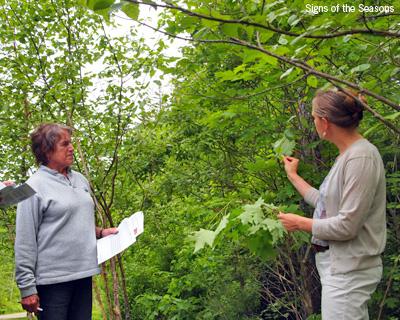Improving Cooperation among Researchers, Citizen Scientists and Resource Managers through the Northeast Regional Phenology Network

Phenology, the study of seasonally recurring biological stages such as tree bud break and leaf fall, helps researchers understand how ecosystems will respond to climate change. There is tremendous variation among plant and animal species in their phenological response to climate change. A coordinated effort to document and interpret these different responses across regions is critical to understanding and adapting to impacts of climate change.
In 2007, the Northeast Regional Phenology Network, working closely with the USA National Phenology Network (USA-NPN), first brought together researchers, land managers, and citizen scientists to monitor and study phenological changes in the region. In 2010, NSRC researchers held a workshop focused on citizen science to improve coordination of citizen monitoring across different programs within the Northeast. They identified 46 target plant and animal species on which to concentrate in the region. The 24 plants, 15 birds, 3 amphibians, and 4 insects were incorporated into the USA-NPN’s Nature’s Notebook species list (https://www.usanpn.org/natures_notebook). Since then, Northeast citizen science groups have contributed many observations to Nature’s Notebook, some of which have already been used in a published analysis of forest budburst in U.S. temperate deciduous forests.
Although it may be several years before meaningful patterns are detected, collecting and analyzing phenology data in a coordinated fashion helps researchers predict how species and ecosystems in the Northern Forest will respond to climate change and helps society adapt to changes in allergy seasons, tourism, and more. Meanwhile, engaging citizen scientists in the effort may spur more people to make personal choices that help mitigate changes to our planet and climate.
